NET4Air’ Workshop took place on October 11, 2024 as an extension of the CAS International Semiconductor Conference, IEEE event. At this hybrid event 61 participants have learned more about opportunities offered by the NET4Air Networking Centre of Excellence, the scientific progress of the project and invited speakers towards environmental monitoring, as well as a preview for new scientists on how to access funding for their ideas.
The workshop agenda was as follows:
| Time | Presentation | Speaker |
|---|---|---|
| 09:00 – 09:10 | Welcome NET4Air Presentation | Carmen Moldovan IMT-Bucharest |
| 09:10 – 09:20 | Centre of excellence presentation | Carmen Moldovan IMT-Bucharest |
| 09:20 – 10:30 | NET4Air Centre of Excellence Partner Presentations | |
| 10:30 – 10:50 | Nanomaterials enabling future energy autonomous IoTs | Mircea Modreanu Tyndall National Institute |
| 10:50 – 11:10 | Coffee Break & Candy Bar | |
| 11:10 – 11:40 | NET4Air Gas Sensors: Results for an interchangeable sensor array platform | Alexandru Grigoroiu IMT-Bucharest |
| 11:40 – 12:00 | Innovative Sensors for Sustainable Agriculture and Environment | Han Shao Tyndall National Institute |
| 12:00 – 12:20 | Performant composed oxidic materials for sensing applications | Mariuca Gartner Inst. Of Physical Chemistry of the Romanian Academy |
| 12:20 – 12:50 | EU funding opportunities for frontier research | Monica Favaro CNR-ICMATE |
| 12:50 – 13:00 | Concluding Remarks |
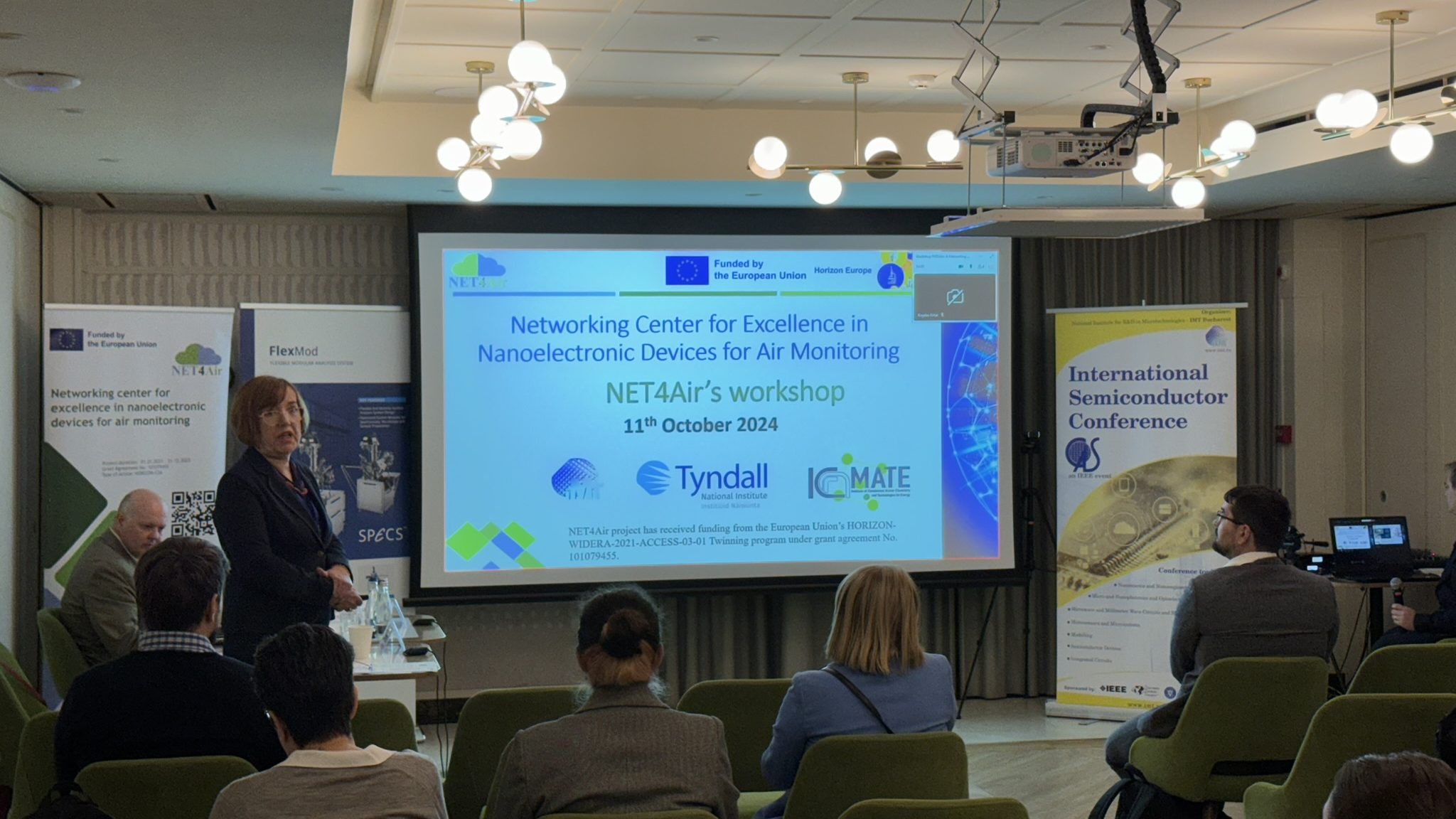

Dr. Carmen Moldovan, the NET4Air project coordinator and the Director of the Research Center for Integration of Technologies and Head of Laboratory of Microsystems for Biomedical applications within IMT-Bucharest welcomed the participants to the workshop through a two part presentation of the NET4Air project and the need for more involvement in environmental monitoring and a call for further partners to become members of the Networking Centre of Excellence that was launched the previous year. Moreover, she highlighted the activity of the NET4Air project in the framework of European development and its demands on economic development and sustainability.
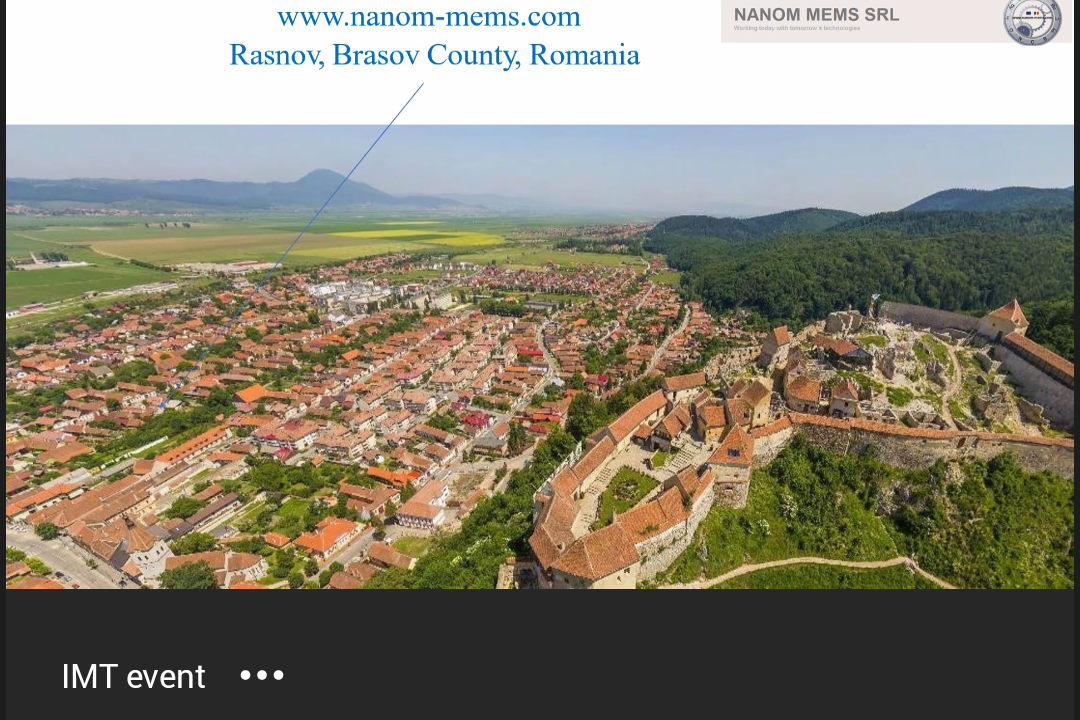
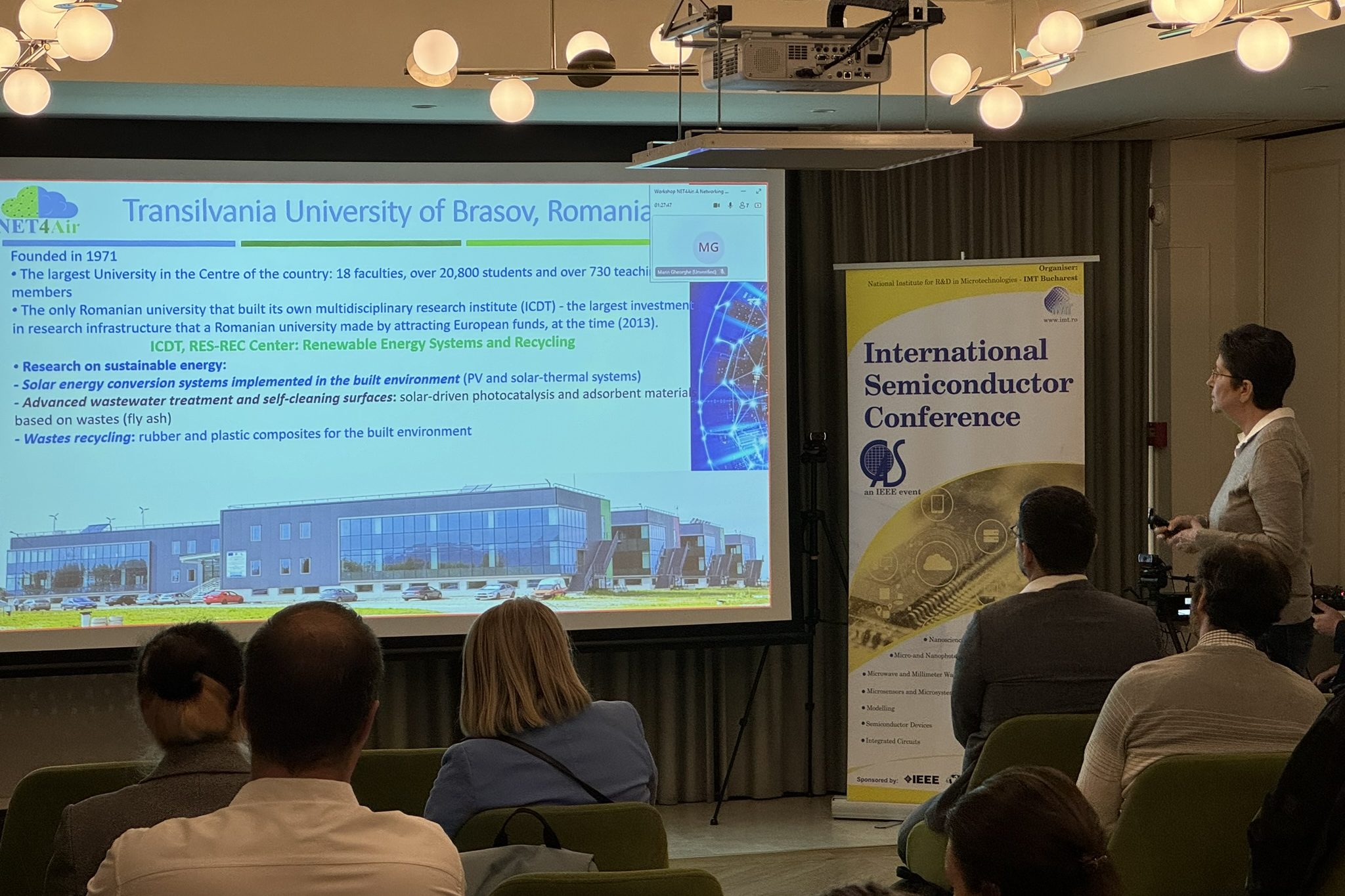
The next session was an opportunity offered to the members of the NET4Air Centre of Excellence and to IMT’s collaborators to make their expertise known to a new public and to express their desires for a party they would be willing to work with towards future objectives and projects. Thus, Dr. Marin Gheorghe gave a review of the technologies available at NANOM MEMS for screen printed sensors, supercapacitors and solar cells as well as of the projects they have been previously been involved in. Following this Prof. Anca Duta described the work Transilvania University of Brasov has performed on characterizing solar cells and the expertise they would seek in collaborating partners.
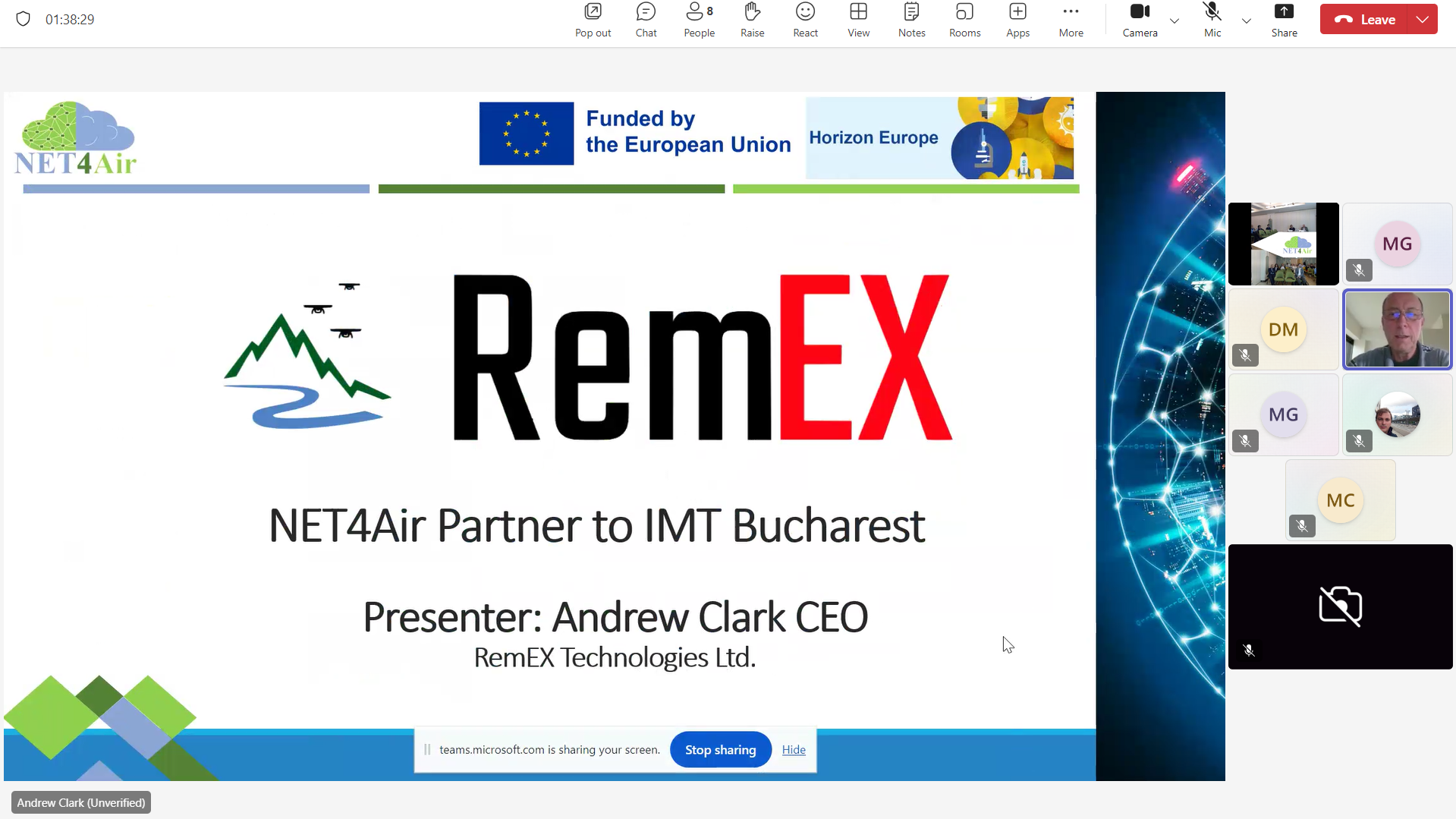

Andrew Clark then gave a review of the broad spectrum of applications that the Low Power Wide Area Networks developed by RemEX Technologies have been deployed in, and have expressed their availability for collaboration with parties that would be interested in employing their technology for new commercial products. Staying in the areas related to power consumption, Prof. Adrian Tulbure highlighted the work performed in Alba Iulia University towards the development of energy harvesters.


To conclude the section of partner presentations, Dr. Maria Dinescu highlighted the technology available at the National Institute for Laser, Plasma and Radiation Physics for developing new sensors and Prof. Alina Ion gave a review of the activity of the National University of Science and Technology POLITEHNICA Bucharest in the use of sensor for environmental monitoring, such as their use for waste water.
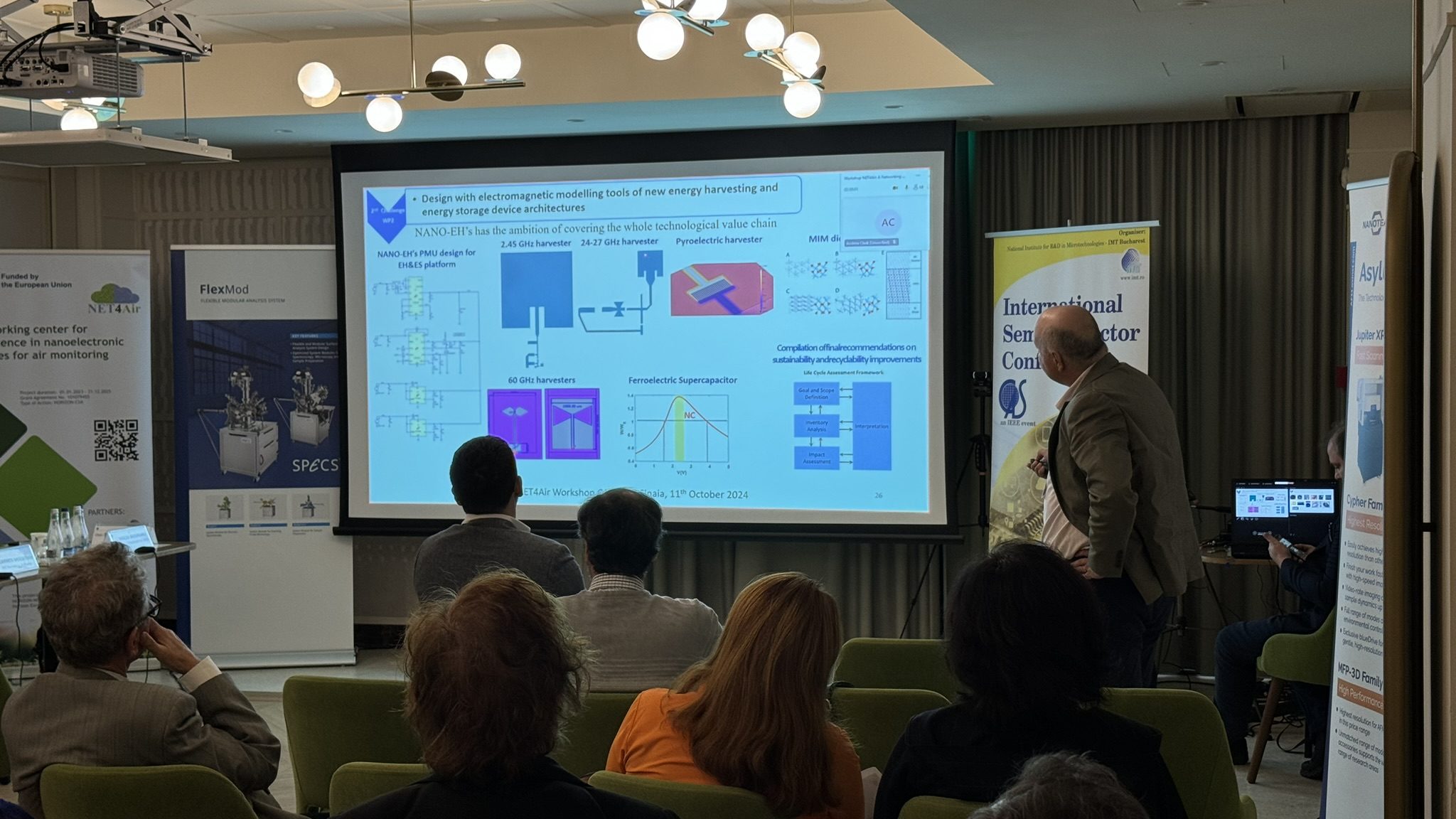
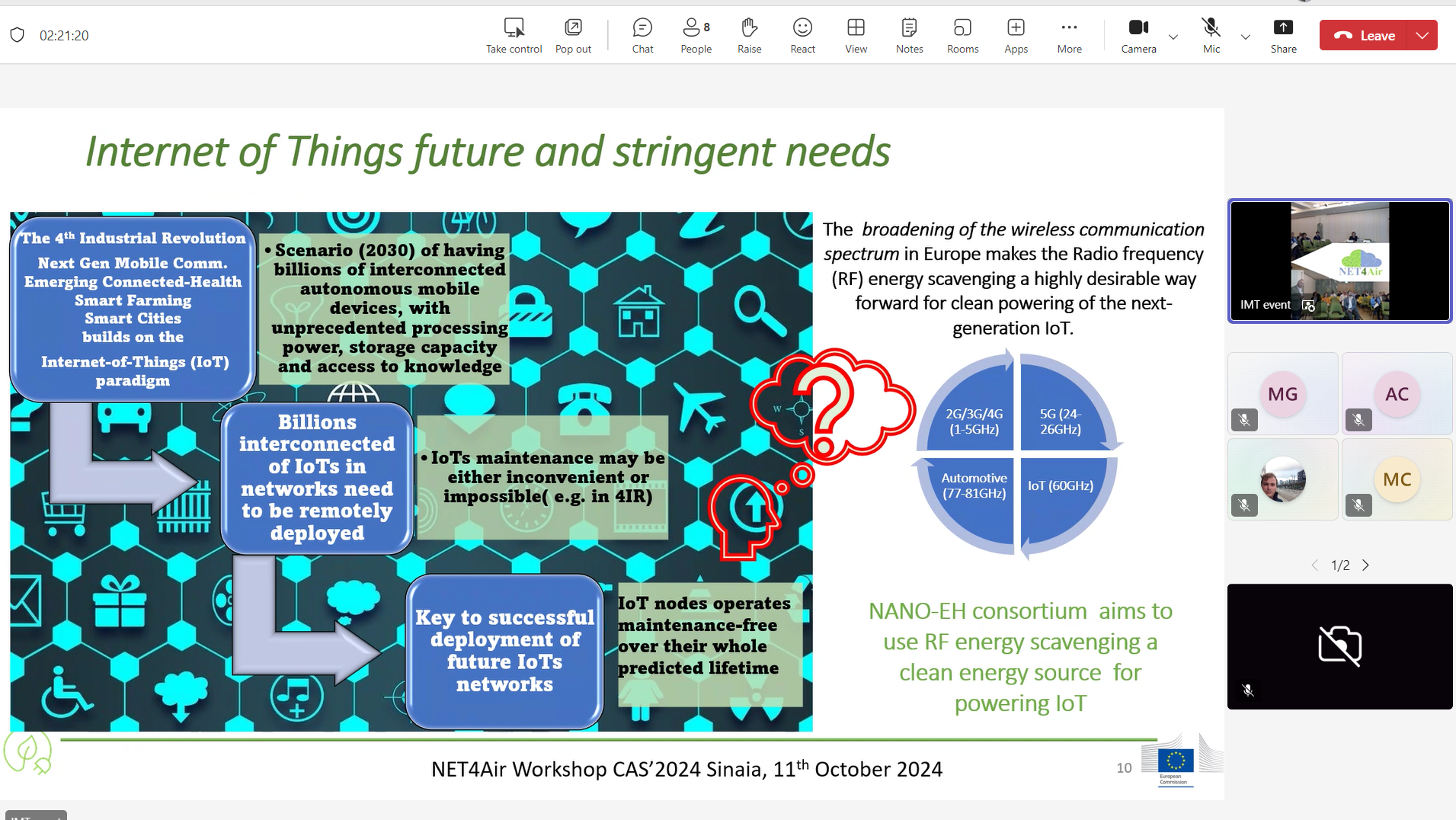
Dr. Mircea Modreanu structured his presentation around the concept of Internet of Things and how it can be employed in pushing environmental monitoring forward. Moreover, through an overview of a prior European project Nanomaterials Enabling Smart Energy Harvesting for Next-Generation Internet-of-Things (NANO-EH), he highlighted the requirements for an European project to be successfully brought to its conclusion and what pitfalls to avoid when managing the project.
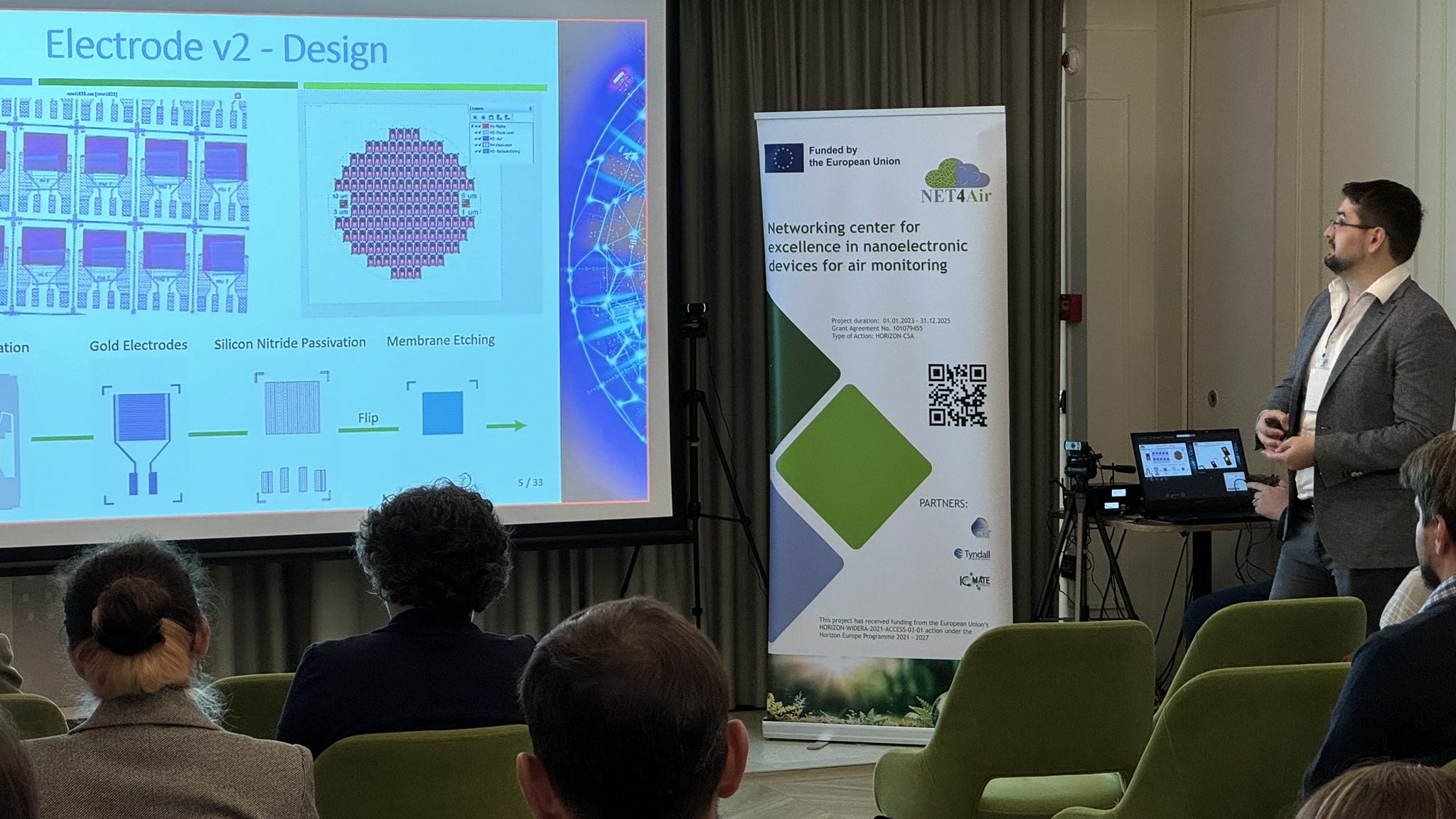
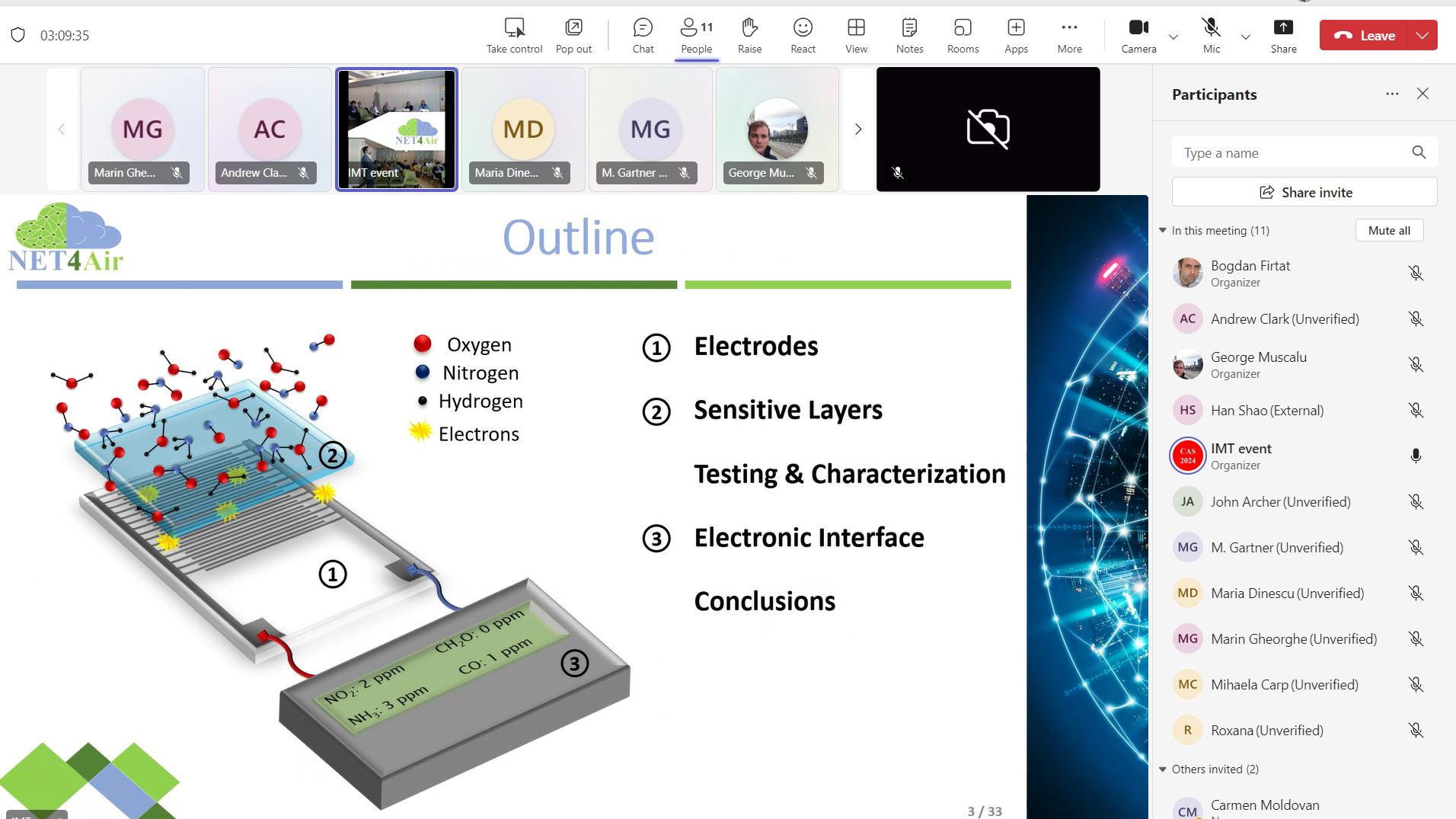
After a break consisting of a candy bar, the current status of the NET4Air scientific component of the project was presented. The talk was focused on gas sensors, including all aspects of their fabrication, the selection of the sensitive layers, and the testing of the most promising sensors on four target gasses: nitrogen dioxide, carbon monoxide, ammonia and formaldehyde. Moreover, a preview of how the final platform will function was given and how it will improve the inherent limitations of chemo-resistive sensors.

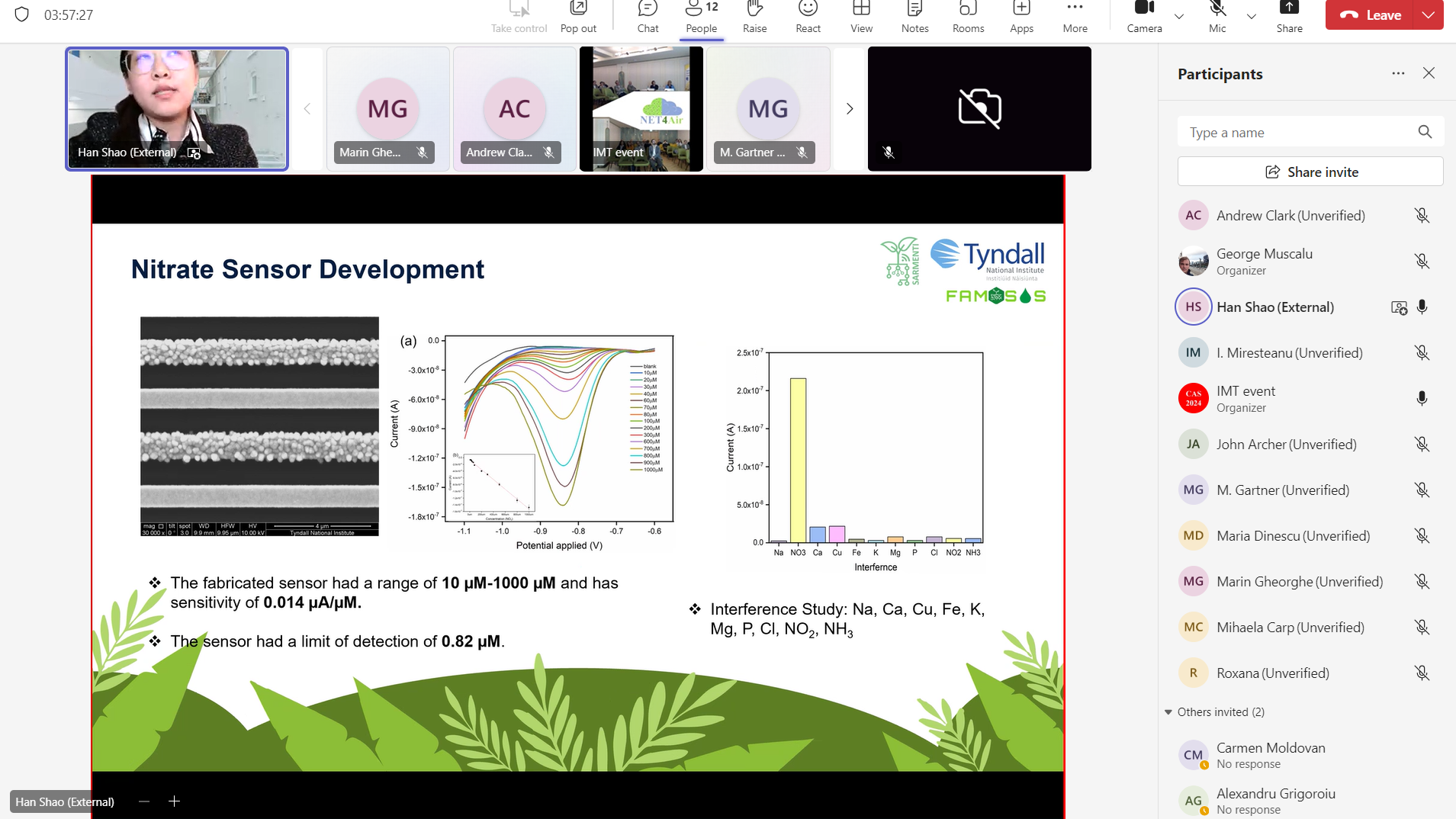
Another important aspect of environmental monitoring is that of the soil health, with Dr. Han Shao from Tyndall National Institute giving an overview of the sensor they have develop for the more accurate monitoring of nitrate in soil during the crop cycle. When compared with the state of the art laboratory measurements, their proposed sensors showed increased resolution capturing the effects of nitrate use in agriculture much better than sporadic laboratory samples. Moreover, she presented her future work on novel sensors for capturing a wide breadth of additives that influence soil health during the agricultural process.
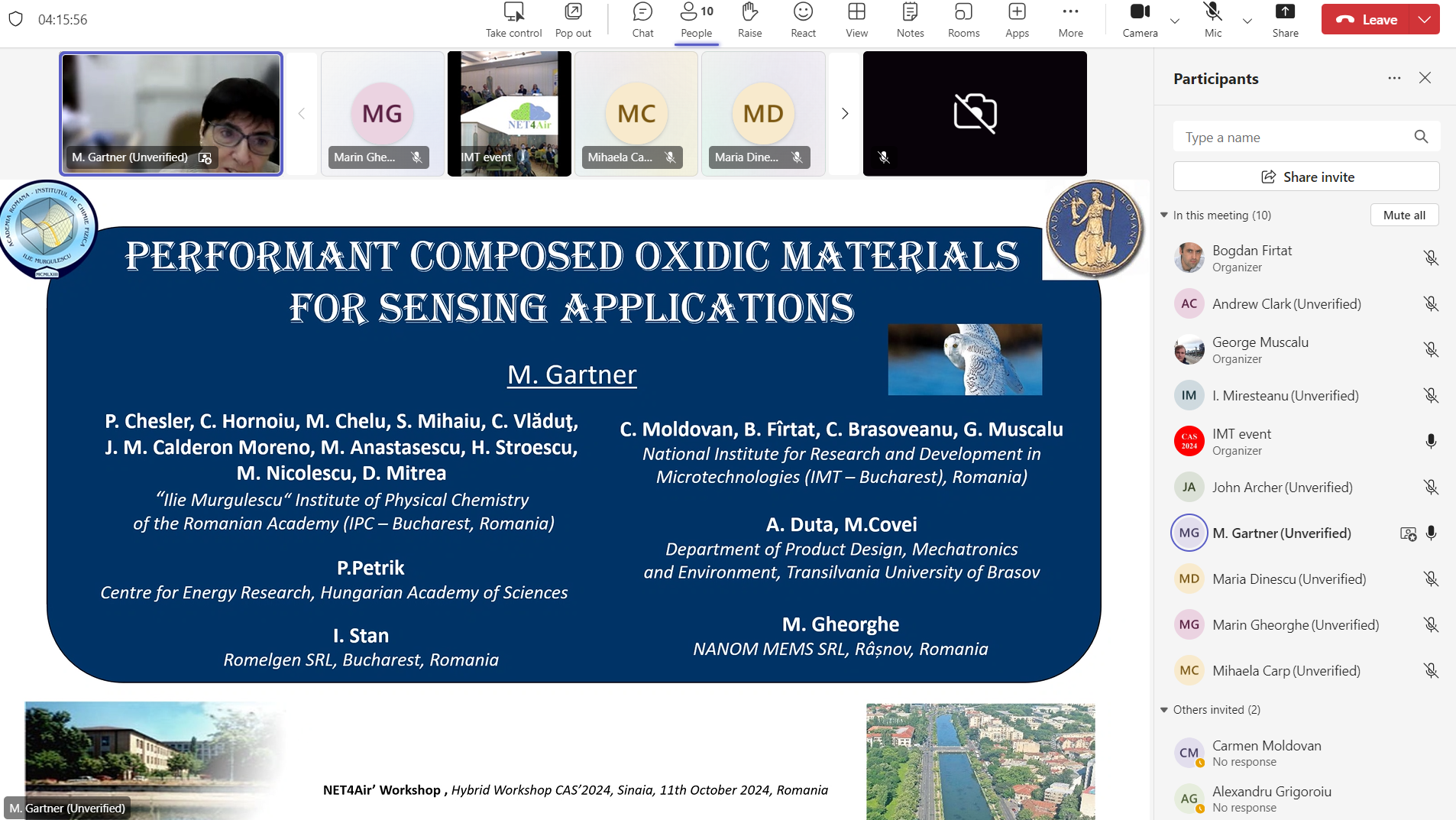

Dr. Mariuca Gartner representing the Institute Of Physical Chemistry of the Romanian Academy then presented their work on metal oxide sensors for environmental monitoring. Highlighted sensors included those for the monitoring of ozone, methane, benzene and formaldehyde, for which results were obtained while measuring at high temperature, with the exception of ozone where the best results were observed at room temperature.
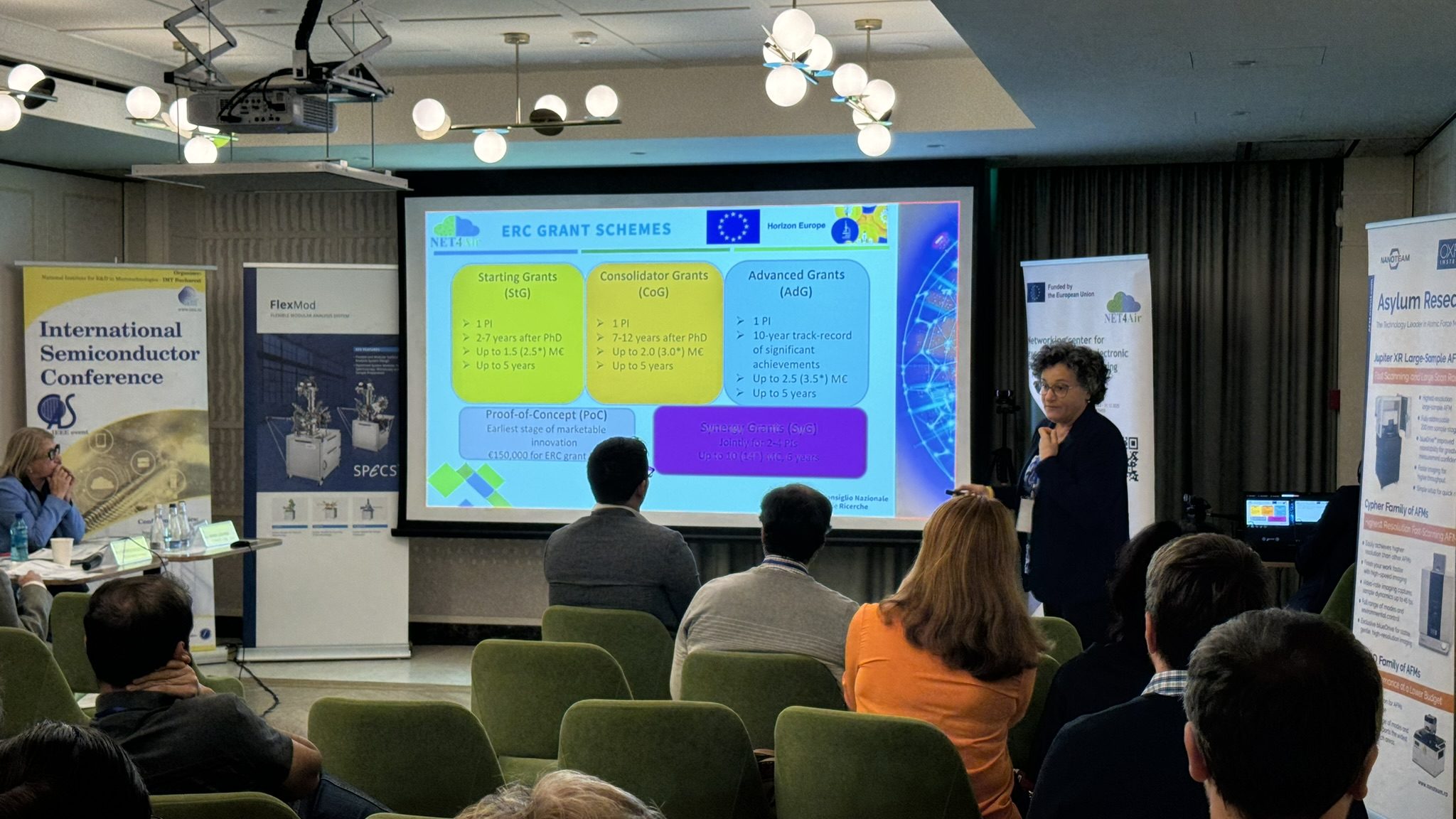
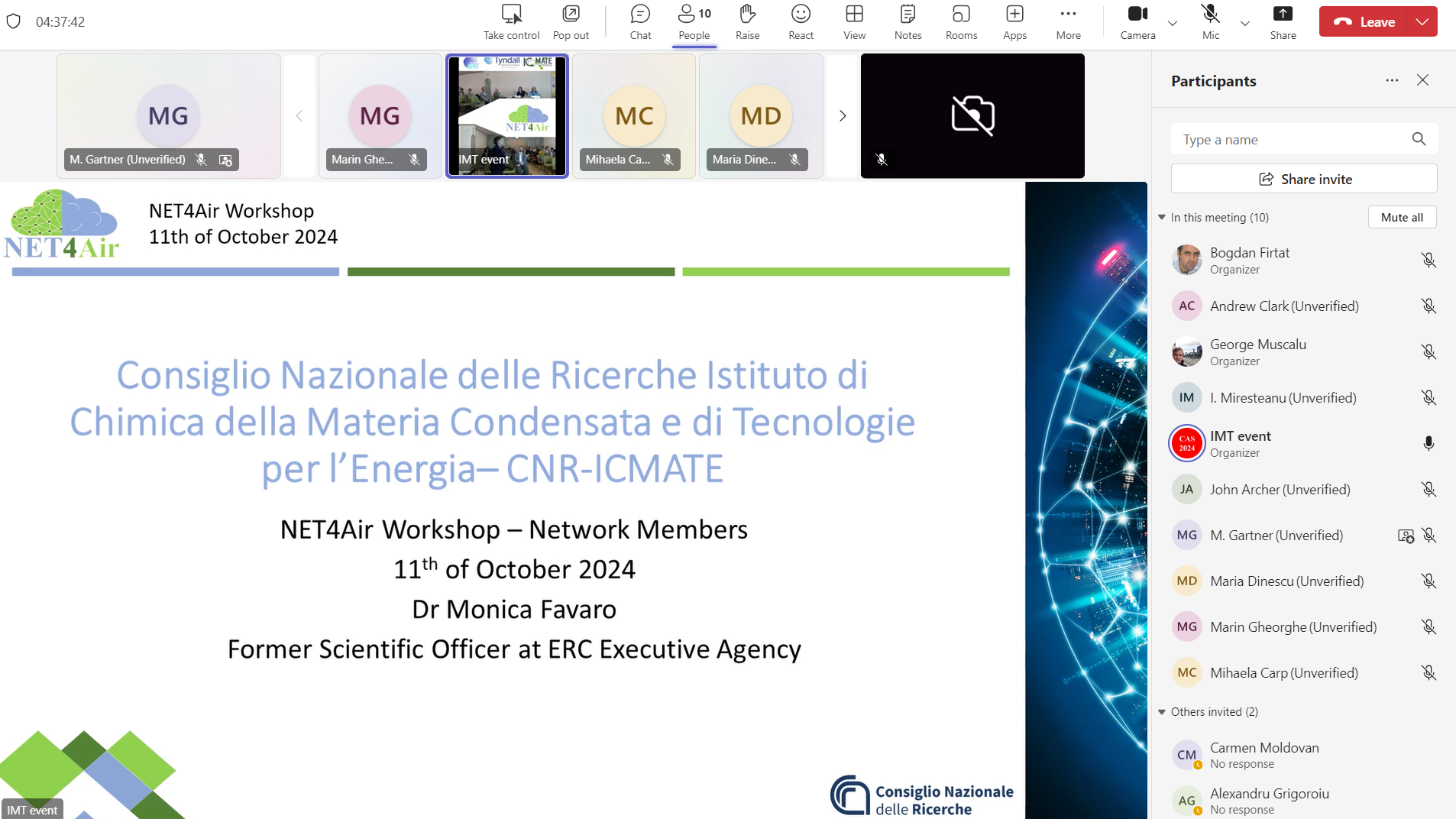
Finally, Dr. Monica Favaro, from CNR-ICMATE, gave a primer on the EU funding opportunities available for frontier research and new scientist. Her talk focused primarily on the ERC Grant Scheme and the requirements for accessing such funds. Moreover, the presentation also touched upon the EIC calls that will be opening in 2025.
